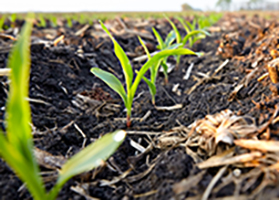Dicamba Update: Continuous Monitoring From the Cab Always a Good Idea
With dicamba application season nearing, there are several important factors to remember once sprayers hit the field. First and foremost, of course, is for applicators to remain vigilant and continuously monitor application conditions from the cab, as several dynamics could change midway throughout an application event, thus making a once-legal application suddenly illegal.
With that mind, here are a few reminders on what you should be looking for/thinking about from the cab:
- The applicator must maintain speeds below 15 mph at all times when spraying dicamba. The experts at Purdue University also advise applicators decrease speeds to 5 mph when spraying near field borders, presumably to further help mitigate concerns of off-target movement.
- The spray boom simply cannot exceed 24 inches in height above the crop canopy, at any time. So if you’ve got gently rolling pasture or terraced fields, you need to make sure your boom leveling technology is adjusting real-time for elevation changes.
- Wind speed at boom height MUST be between 3 and 10 mph at the time of application to move forward with the application. This includes gusts. Purdue advises that “wind direction/speed and temperature measurements must be made with a reliable, defendable source, and in post-application records the applicator must indicate the method used to measure.”
- Applicators need to actively monitor wind speed and direction throughout the application process (not just during pre-application), as winds can gust, and those of us in the Midwest know they can also change direction rapidly, sometimes without notice.
- When applying from late-afternoon into the evening (approximately 2 p.m. – 7 p.m. local time), and then again at early morning to mid-morning (approximately 6 a.m. – 11 a.m. local time), be on the lookout for a possible temperature inversion in the field. These form locally and applicators should constantly be monitoring for low, heavy cloud cover and a 5-degree temperature increase since sunrise. If you suspect a temperature inversion has occurred or is potentially occurring in your field, press pause on the application and get out and test for conditions that would signify a temperature inversion at boom height. If the presence of a temperature inversion is confirmed, the applicator should stop the application until the atmospheric condition passes.
0
1
5
Dicamba Update: Continuous Monitoring From the Cab Always a Good Idea






